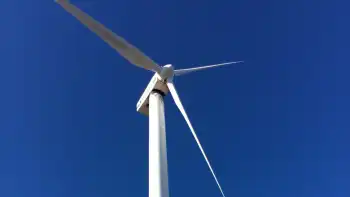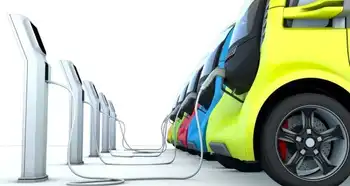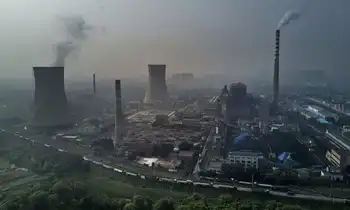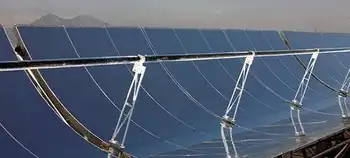Energy crisis is coming
And the same thing will also hit the Western U.S. And the Southeastern U.S. And parts of the Midwest.
They sure did not talk about power failures in the presidential debates, did they? I don't know why not. All the insiders know about it. Indeed, power failures and price spikes are baked into the national economic cake. People who follow these things are quite sure of it. It's just a question of when, exactly, the lights will start to flicker.
We already had one experience with a regional blackout. Do you remember the power failure of Aug. 14, 2003? Almost the entire Northeast U.S. went dark, except it occurred in the middle of the day. The effects were immediate on over 50 million people in the U.S. and Canada.
Skyscrapers just stopped working - no elevators, no lights, no water, no nothing. Hospital operating rooms went dark. Traffic signals stopped functioning and people were in the midst of instant gridlock. If you ran out of gas, there was no power for the pumps at the gas station. Refrigerators stopped humming and large amounts of food spoiled. Rail systems stopped running - from streetcars in Toronto to subways in New York and Amtrak and freight trains in the middle of nowhere. FAA flight controllers had to communicate with airborne pilots via battery-powered walkie-talkies. Sewage systems shut down, and a lot of you-know-what backed up in many low-lying areas.
The 2003 power failure was bad news, although short in duration. And then it was back to business for the U.S. Things became (if you will excuse the expression) "normal" again. Just like in Amity.
Looking back, the utility companies got the power back up and running, right? And the experts investigated the origins of the problem, right? The people who know all about power grids fixed the problem, right? It could not happen again, right? The U.S. power grid has ample electricity-generating capacity, right? And there's plenty of transmission to move power from one region to another, right?
Well, no.
I attended a privately sponsored presentation on U.S. energy policy. The main speaker was a senior faculty member from Carnegie Mellon University. This guy has been "doing electricity" for about 40 years or so. He has written reports for the National Academy of Sciences. When the people at the U.S. Department of Energy have a question about electricity, they call this CMU professor.
The news is not good. In 2007, there were about 144 new coal-fired power plants on the drawing boards of the U.S. energy utilities. But, said the professor, "We will probably build none of them." Indeed, "The electric industry in the U.S. is in terrible shape," said the CMU man. So we should expect local and regional brownouts and blackouts to become common occurrences "within five years." But the first isolated instances of brownout and blackout will hit us much sooner than that.
Why is there such a gloomy forecast? Because essentially, the deregulation of the 1990s was botched. According to the CMU electricity expert, botched deregulation "slowed investment, raised prices and led to more and more uncertainty." So now few utilities or their executives want to take political, regulatory, technical or financial risks. Hence, the entire long-range planning cycle has broken down.
It's almost impossible to decide what to build, and at what scale. Costs are exploding, particularly for new construction. It's safe to say that most power plant construction cost projections have doubled within the past 18 months. The prospect of fast-changing environmental regulations also adds to the uncertainty. No one wants to build a power plant and learn in five or 10 years or so that environmental regulations are going to shut it down.
Even the alternative energy industry — with wind, solar and geothermal as the poster children - has formidable challenges. The biggest issue is cost competitiveness. That's because alternative systems provide power at costs that range from slightly higher to much higher than traditional power from, say, coal plants. Then there are issues of reliability, due to the intermittent nature of wind and solar, and the still-novel nature of geothermal power. And other issues include the lack of transmission from the usually remote sites of wind and solar facilities.
Overall, U.S. power producers face the prospect of many different forms of investment uncertainty. What will be the availability of different fuel mixes? Will coal still be useable? Or will natural gas be available at a cost they can afford? Can power producers invest in nuclear systems when there is still no definite program for disposing of the waste stream over the next 50 years? Or should the utility companies go all out for alternative systems?
But the next question is how much can consumers afford to pay? And what rates will the regulators allow? If utilities invest in alternative power systems (like wind or solar) that produce electricity at, say, 20-30 cents per kilowatt hour (kwh), will the regulators set those relatively high costs as the level of reimbursement? And for how long? What if the regulators permit the higher costs for only a few years and then penalize the utilities because some "better" technology comes along? At the end of the day, the base line cost of electricity is set against the cost to produce comparable coal or natural gas-based electricity. And this cost setting occurs even though there is a growing bias against burning carbon in the U.S. political and regulatory culture.
One attendee at the discussion commented, "When you're in a 'no-win' situation, guess what? You can't win."
The CMU professor has looked at historical trends for power in the U.S. His best estimate is that over the next decade or so, the price for electricity will about double on average throughout the nation. "This would put the cost of electricity about on par, as a percentage, with where it was back in the 1950s." But that is only if people keep making investments in new power systems and the nation adopts conservation and efficiency measures on a large scale. Absent that? It's lights out.
So you might not see it in your daily life - not yet, anyhow - but the power industry is currently paralyzed by the uncertainty of lopsided risks. And as old power plants age and go off stream, there will be less and less reserve power. Costs are going to rise. And reliability will fall. It's inevitable.
So one investment sector that ought to do well over the next five years is power and backup power systems. And particularly, the companies that should do well are involved in power systems that are off the drawing boards and in some phase of construction, or near completion.
Related News
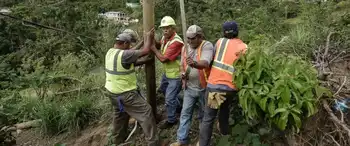
Electricity restored to 75 percent of customers in Puerto Rico
PUERTO RICO - Nearly six months after Hurricane Maria decimated Puerto Rico, the island's electricity has been restored to 75 percent capacity, according to its utility company.
The Puerto Rico Electric Power Authority said Sunday that 75.35 percent of customers now have electricity. It added that 90.8 percent of the electrical grid, already anemic even before the Sept. 20 storm barrelled through the island, is generating power again.
Thousands of power restoration personnel made up of the Puerto Rico Electric Power Authority (PREPA), the Federal Emergency Management Agency (FEMA), industry workers from the mainland, and the Army Corps of Engineers have made…


